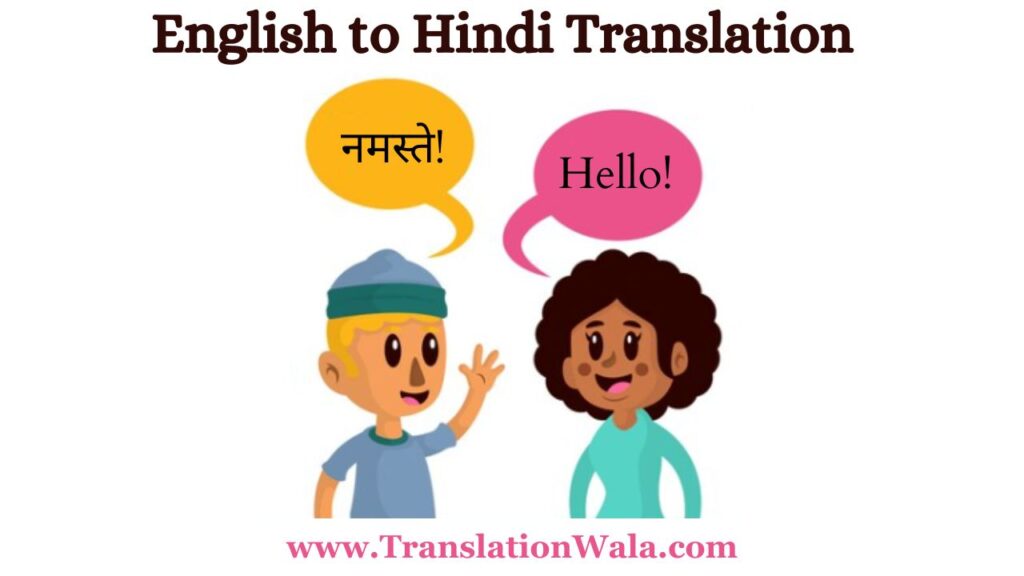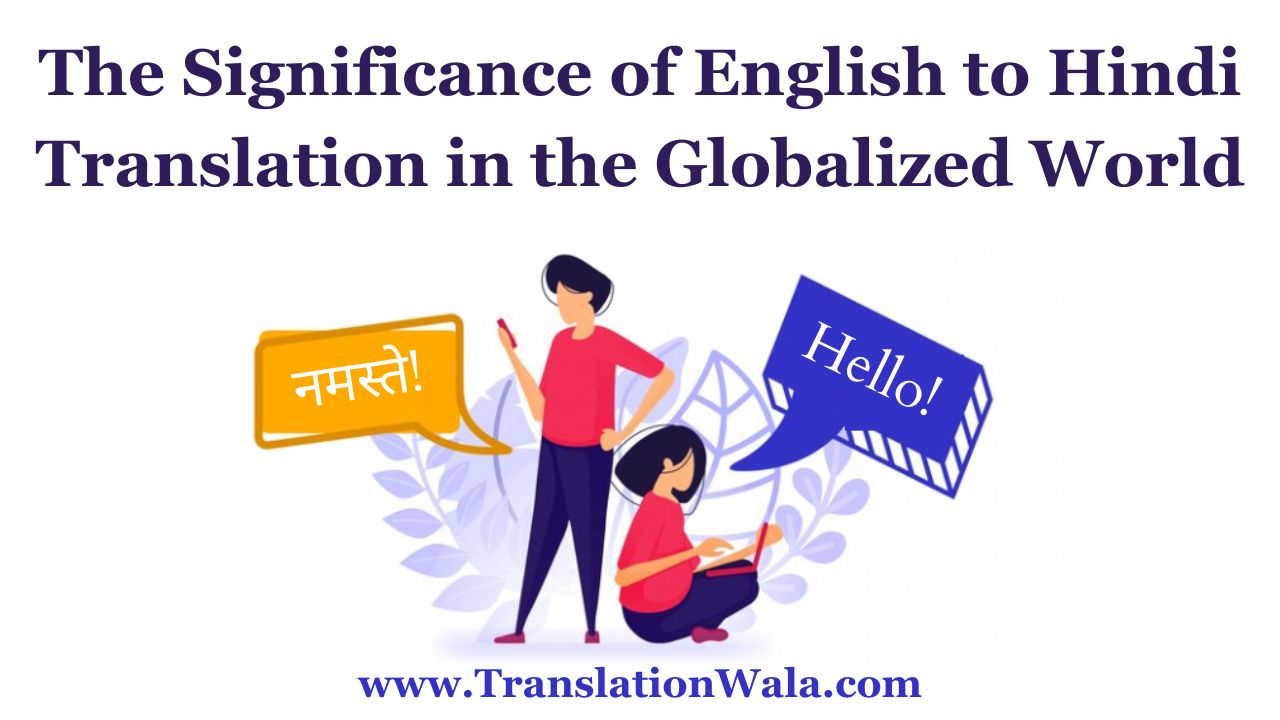There are more links between people and places than ever before. People from different countries can now share ideas, things, and cultures more easily thanks to globalization. Language, though, is at the heart of this exchange and is a major problem. The fact that there are hundreds of languages spoken throughout the globe might make it challenging for people to interact with one another and comprehend one another. Language is crucial in this regard since it facilitates communication between individuals hailing from various nations.
In this situation, English to Hindi Translation is very important. In business, government, and schools all over the world, English is the lingua franca, or common language. On the other hand, more than 600 million people speak Hindi, making it one of the most spoken languages in the world and the main language in India, which has a booming economy and a lot of culture history.
Why is English to Hindi translation so important?
This is why it’s important:
- Economic Growth: Businesses that want to reach the huge Indian market need versions that are correct and take into account Indian culture. To reach the right people, marketing materials, product details, and formal papers need to be written clearly and clearly in Hindi. This not only boosts sales and brand recognition, but it also makes new jobs available and improves trade between countries.
- Inclusive Education: A lot of science study and college writing is done in English. Translation fills in the gaps in information so that Hindi users can use training materials and new technologies. That makes academic discussion better and sparks new ideas because both students and professionals can find more information.
- Cultural Exchange: People who know English and Hindi can share thoughts, writing, and art with each other when they can translate well. This helps people from different countries understand and appreciate each other. Imagine how translated Indian epics and poems would affect people all over the world, or how Hindi users could watch Hollywood movies.
- Government Transparency: For a government to work, people must be well-informed. Translation makes sure that people who know Hindi can understand government rules, legal papers, and public statements. This makes the political process more open, welcoming, and democratically participatory.
- Technological Innovation: English is the main language used in science. Translation is a key part of making software screens, user guides, and technical documents easy for Hindi people to understand. This makes sure that everyone knows how to use technology, encourages people to accept it, and gives people the power to join in the digital age.
Also Read: Unlocking Communication: Expert English to Punjabi Translation Services

Challenges and Considerations in English to Hindi Translation
There is no denying the benefits, but English to Hindi Translation can be hard at times. The two languages are from different language groups, called Indo-European and Indo-Iranian, and have different cultural and grammatical features. Sometimes there aren’t straight word-for-word translations, so writers have to get to the heart of what the original text was saying.
Here are some aspects to consider for effective translation:
- Technical Accuracy: Legal contracts and technical papers need to be translated precisely to make sure they are clear and avoid misunderstandings.
- Cultural Sensitivity: To make sure the translated message hits home with the intended audience, translators need to be familiar with cultural references and words in both languages.
- Localization: Websites and marketing materials need to be translated to work in Hindi-speaking areas, taking into account regional tastes and slang.
The Future of English to Hindi Translation
Conversation takes on an even greater significance as the globe continues to become more interconnected day by day. As India’s cultural and economic power grows, so will the need for high-quality translations from English to Hindi. Even though machine translation has come a long way and can answer some questions, people still need to know a lot about other cultures in order to fully understand and value them.
Bringing together individuals who speak different languages may be accomplished in a number of essential ways, including the hiring of experienced speakers, the encouragement of English and Hindi students to collaborate, and the participation in language study programs. If these problems are resolved, we will be able to fully enjoy the advantages that come with being a part of a global community. Being able to understand, work with, and respect each other better will help people from different places.
In conclusion
English to Hindi Translation is more than just changing words. In addition, In addition to this, it is about bringing together ideas, nations, and individuals. These linguistic bridges are more crucial than they have ever been in a society that is striving to advance and collaborate with one another. You will be able to build a better and more open future for yourself if you have an understanding for the relevance of the future and put money into the quality of the future.



